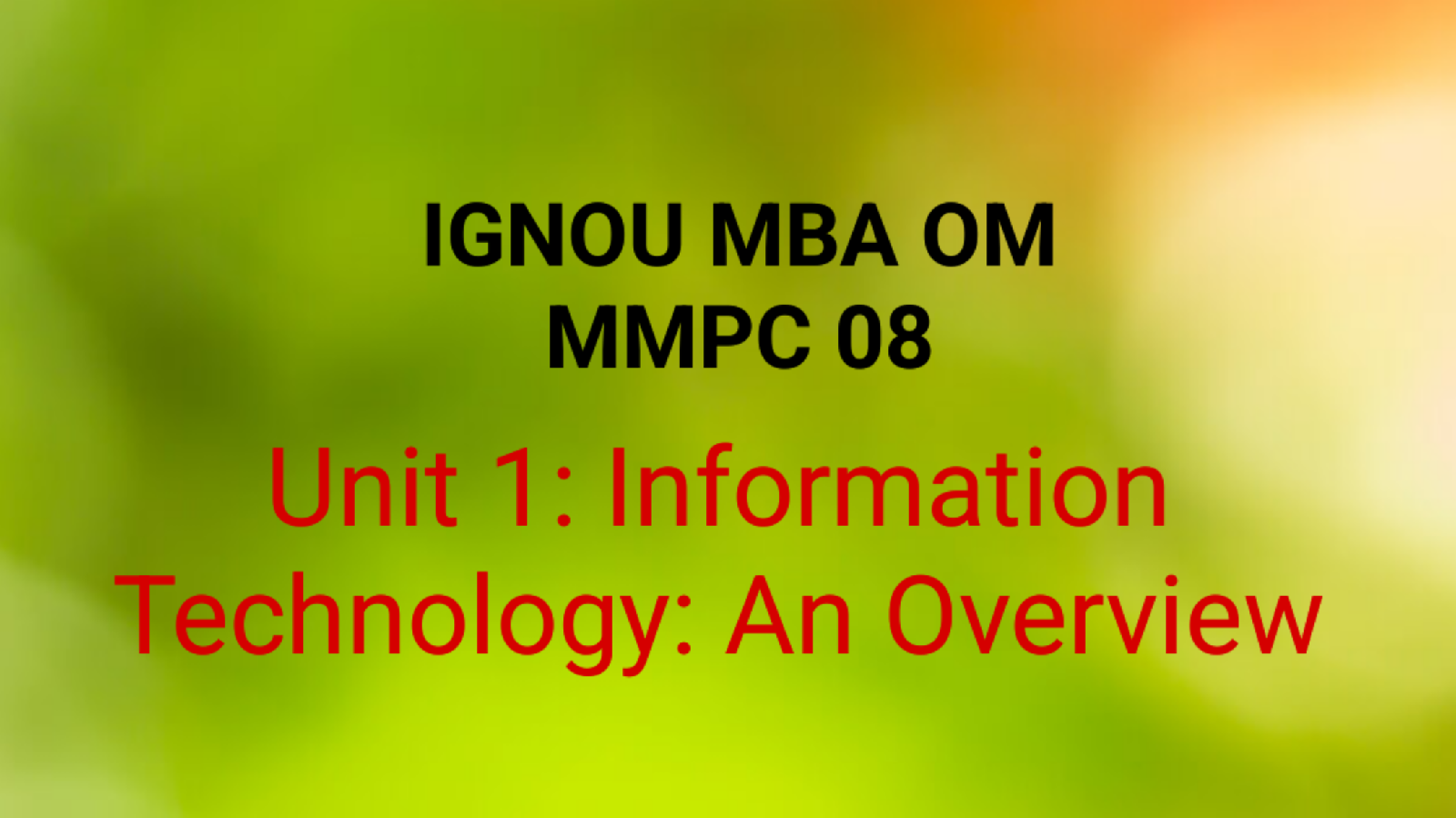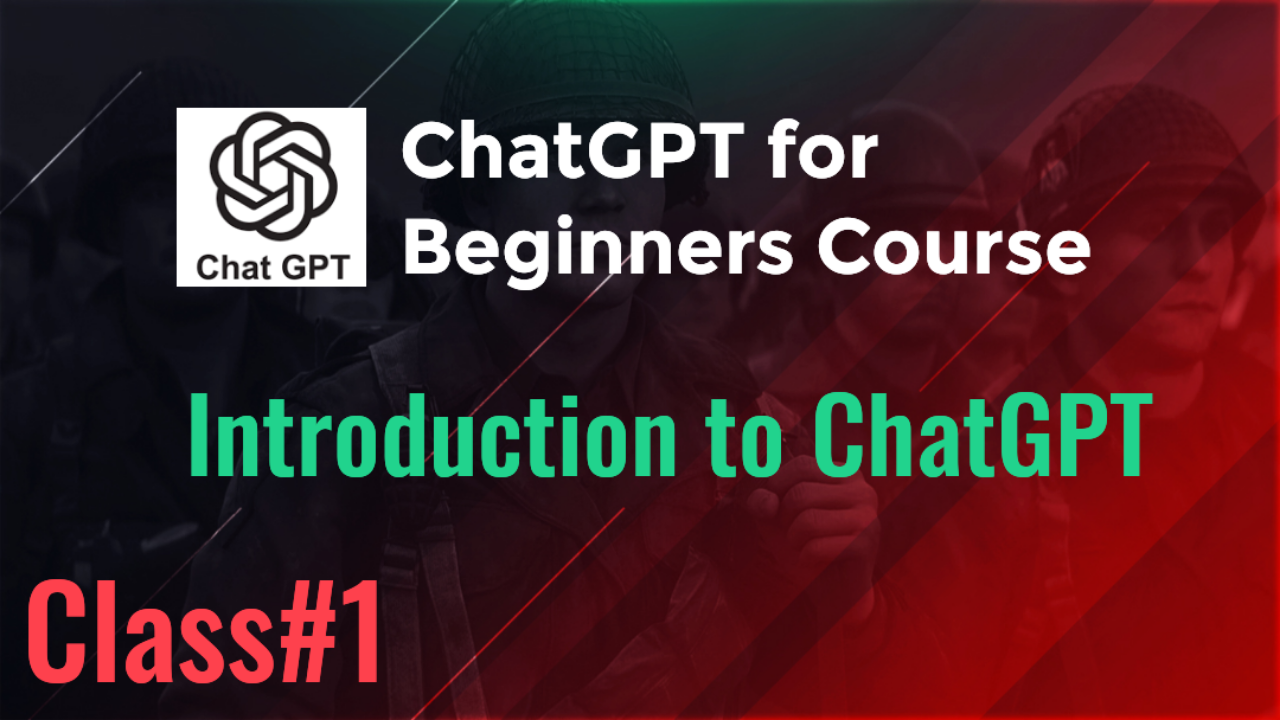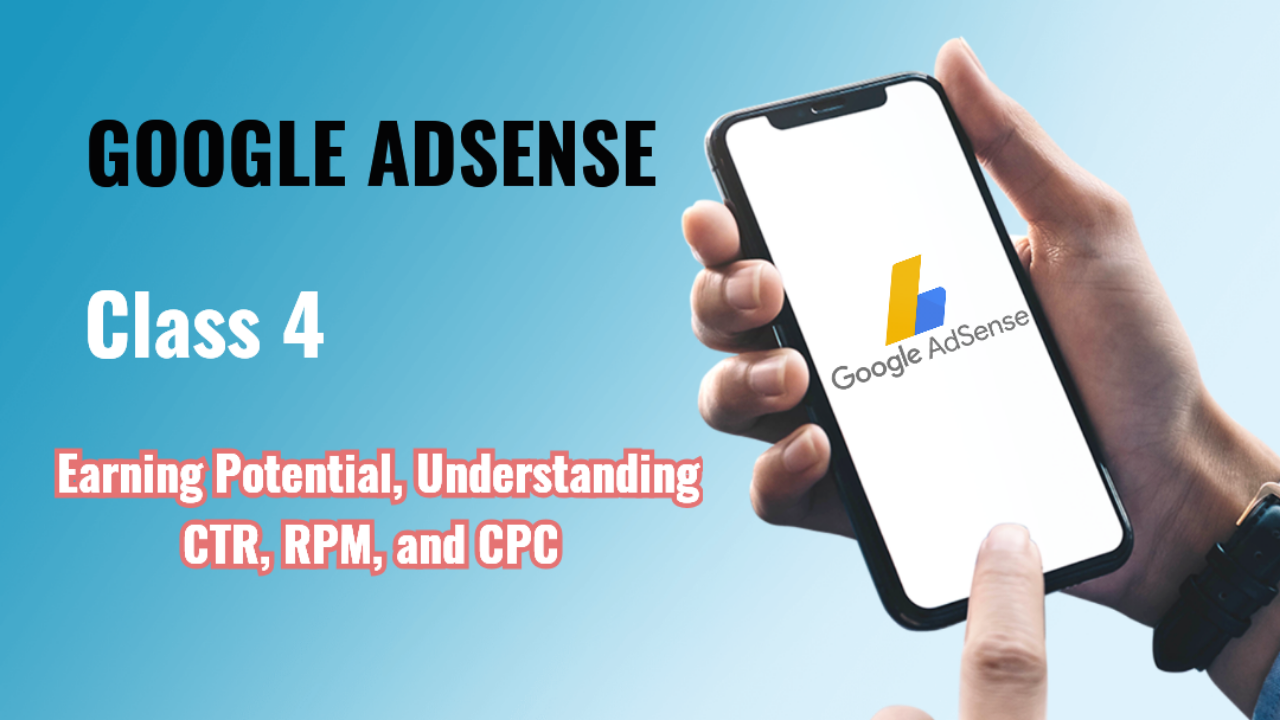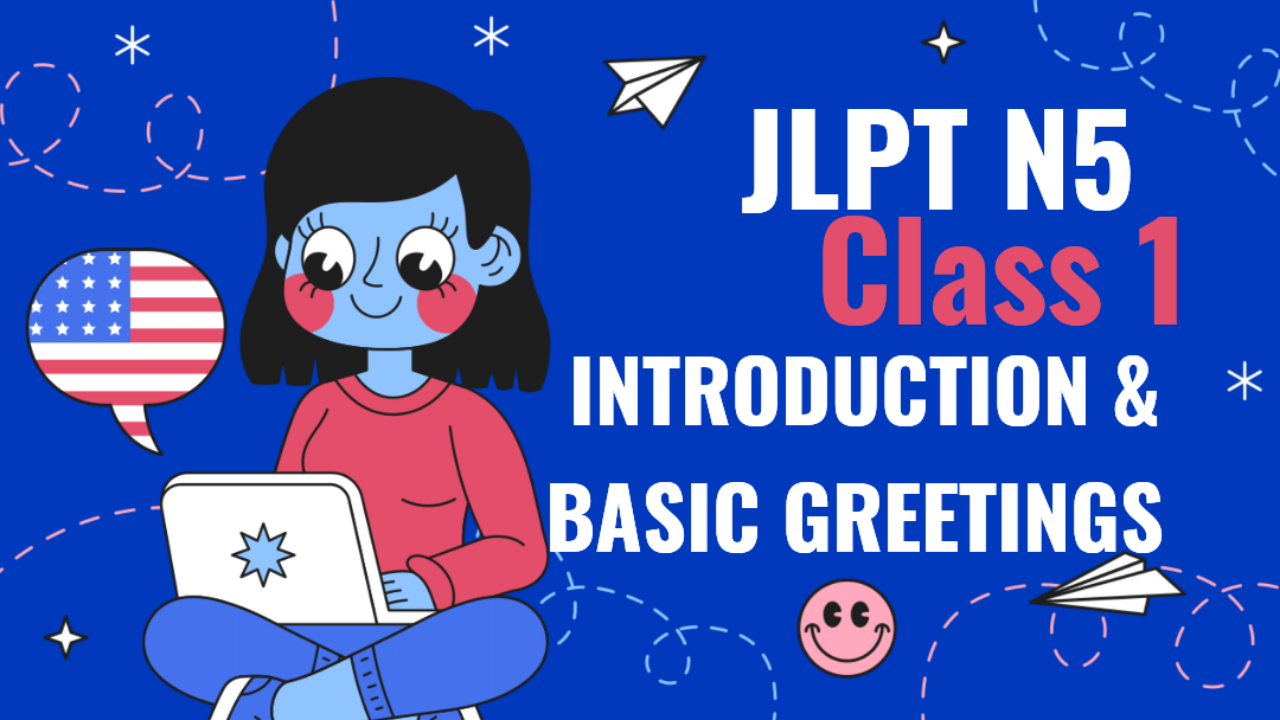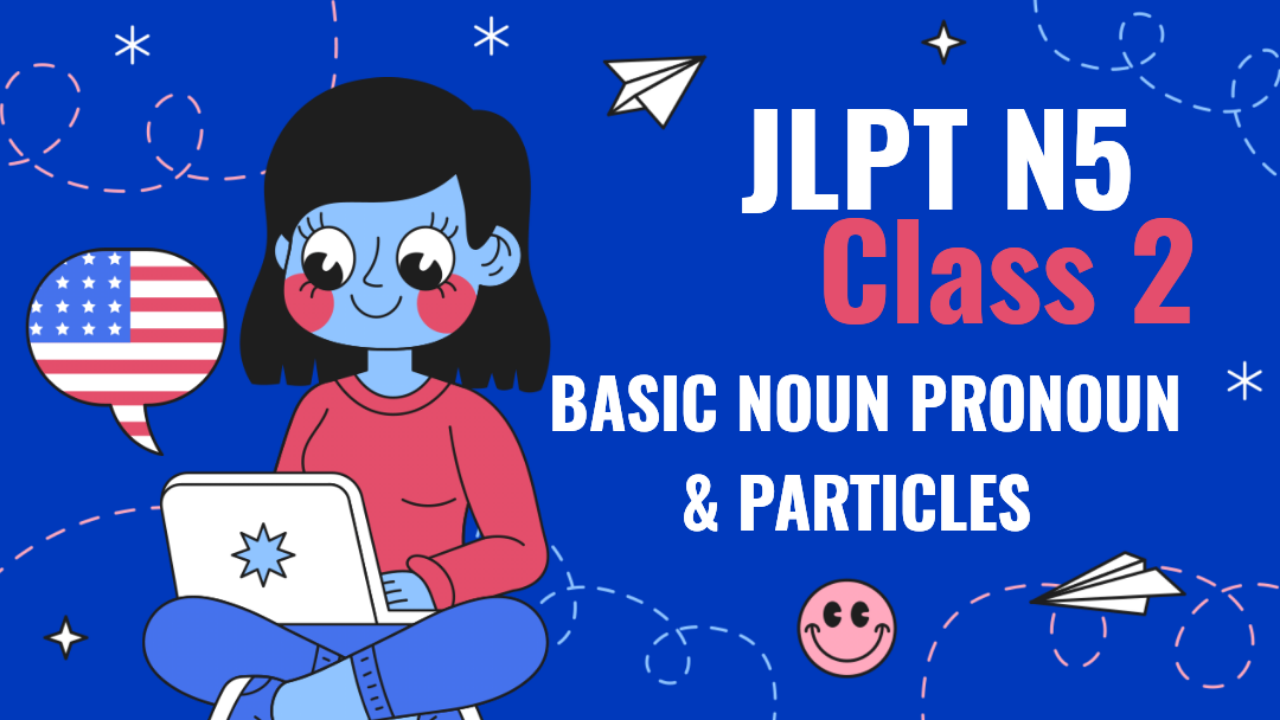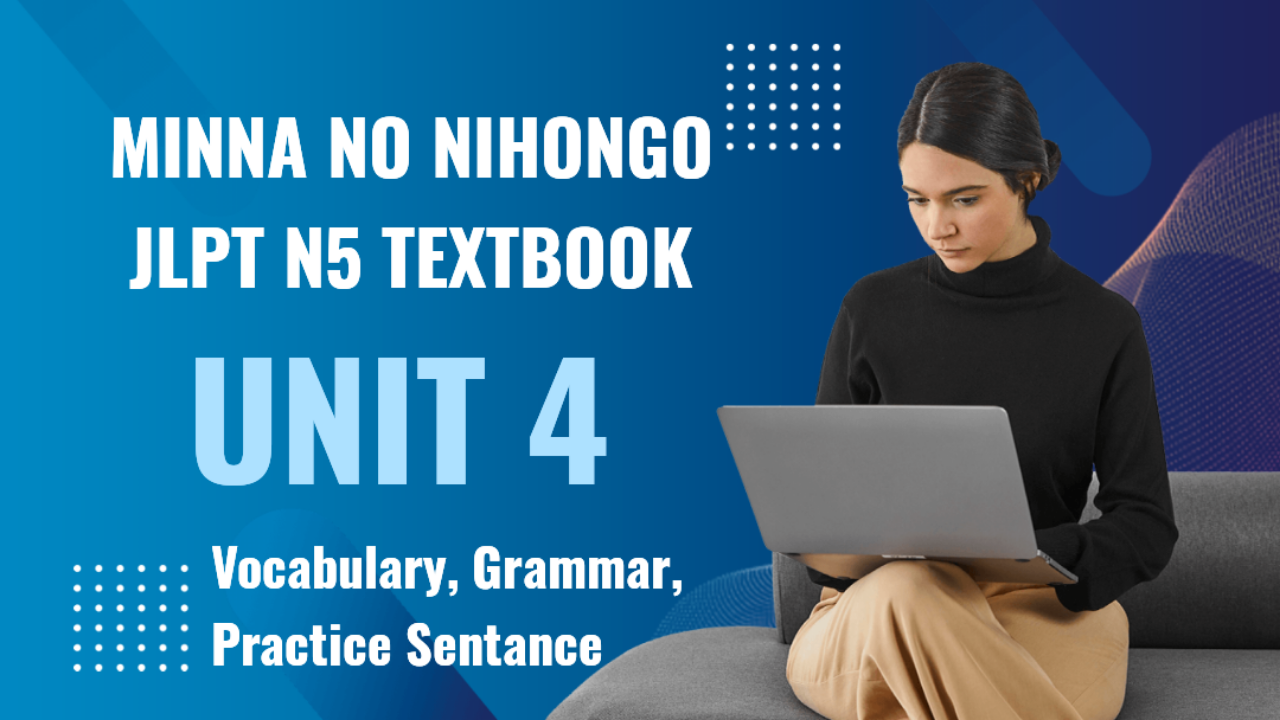IGNOU MBA MMPC-08: Information Technology for Managers
Unit 1: Information Technology: An Overview
Introduction
Information Technology (IT) plays a critical role in modern business operations. This unit provides an overview of IT, including its components, applications, and impact on organizations.
1. Theories and Concepts of Information Technology
1.1 Definition of Information Technology
Information Technology (IT) refers to the use of computers, software, and networks to manage, process, and communicate information. It encompasses hardware, software, databases, and networks.
1.2 Components of Information Technology
- Hardware – Physical devices such as computers, servers, and networking equipment.
- Software – Applications and operating systems that enable computing tasks.
- Database Management – Systems that store and organize data efficiently.
- Networking – Infrastructure that connects different IT systems and facilitates communication.
- Cybersecurity – Protecting IT assets from cyber threats and unauthorized access.
1.3 Evolution of Information Technology
IT has evolved through multiple generations, from early computing devices to advanced cloud computing and artificial intelligence.
- First Generation (1940s-1950s): Vacuum tube-based computers.
- Second Generation (1950s-1960s): Transistor-based computers.
- Third Generation (1960s-1970s): Integrated circuits and mainframes.
- Fourth Generation (1970s-1990s): Microprocessors and personal computers.
- Fifth Generation (1990s-Present): Cloud computing, AI, and big data.
1.4 Role of IT in Business
IT enhances business operations through:
- Automation of processes (e.g., ERP systems).
- Improved decision-making (e.g., data analytics tools).
- Enhanced communication (e.g., emails, video conferencing).
- Increased efficiency (e.g., cloud computing services).
- Competitive advantage (e.g., e-commerce and digital marketing).
2. Information Systems and Their Types
2.1 Transaction Processing Systems (TPS)
- Used for routine business operations like billing and payroll.
2.2 Management Information Systems (MIS)
- Provides summarized reports for managerial decision-making.
2.3 Decision Support Systems (DSS)
- Helps in complex decision-making using data analysis tools.
2.4 Enterprise Resource Planning (ERP) Systems
- Integrates various business functions into a unified system.
2.5 Customer Relationship Management (CRM) Systems
- Helps in managing customer interactions and improving service.
3. Emerging Trends in IT
3.1 Cloud Computing
- Provides on-demand computing resources over the internet.
3.2 Artificial Intelligence (AI) and Machine Learning
- Enables automation, data analysis, and predictive modeling.
3.3 Blockchain Technology
- Enhances security in financial transactions and data management.
3.4 Internet of Things (IoT)
- Connects devices for real-time data exchange and automation.
3.5 Cybersecurity and Ethical Issues
- Protects against cyber threats like hacking and data breaches.
4. Practical Applications and Experiments
4.1 Experiment: Creating a Simple Database System
Objective: To understand the basics of database management.
Steps:
- Install a database management system (e.g., MySQL, MS Access).
- Create a simple table with customer details.
- Run queries to retrieve specific data.
- Analyze how databases improve business efficiency.
4.2 Experiment: Understanding Cloud Computing
Objective: To explore cloud storage and its benefits.
Steps:
- Create a free cloud storage account (Google Drive, Dropbox).
- Upload and share a document.
- Analyze the benefits of cloud-based collaboration.
5. Assignment Questions
- Define Information Technology and explain its key components.
- Discuss the evolution of IT from first-generation computers to modern AI-based systems.
- How does IT enhance business operations? Give examples.
- Differentiate between MIS, DSS, and ERP systems with real-world applications.
- Explain the role of cybersecurity in IT management.
6. Self-Study Questions
- What are the major components of an IT system?
- How has cloud computing changed traditional business operations?
- What are the ethical challenges associated with IT advancements?
- Discuss the role of IT in e-commerce and digital marketing.
- How do blockchain and IoT contribute to business innovation?
7. Exam Questions
Short Answer Questions:
- Define Information Technology.
- List the major components of IT.
- Explain the difference between hardware and software.
- What is an ERP system?
- Give an example of a cloud computing service.
Long Answer Questions:
- Explain the role of IT in modern business operations with examples.
- Discuss the different types of Information Systems and their business applications.
- How has Artificial Intelligence influenced IT management?
- Compare cloud computing and traditional on-premise IT infrastructure.
- What are the key cybersecurity threats in IT, and how can they be mitigated?
Conclusion
This unit provides a foundational understanding of Information Technology and its significance in business. It covers IT components, systems, emerging trends, and their real-world applications, helping managers make informed decisions about IT adoption in organizations.
This document comprehensively covers Unit 1: Information Technology: An Overview for IGNOU MBA MMPC-08, including theories, key concepts, experiments, assignments, and exam questions. Let me know if you need any modifications or additional details!

